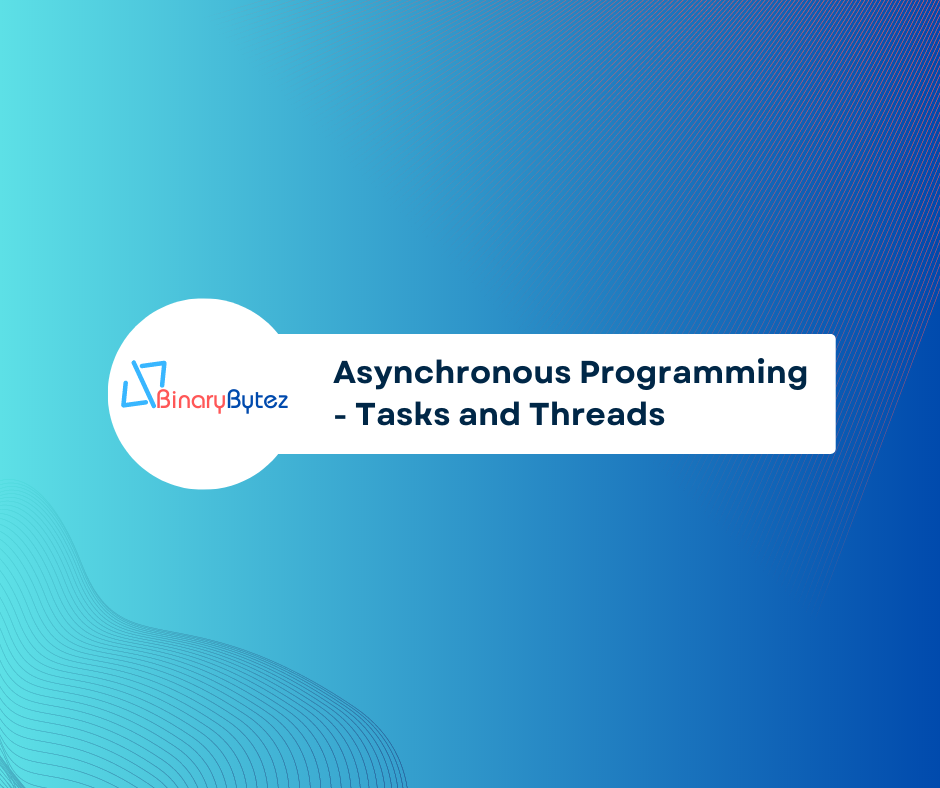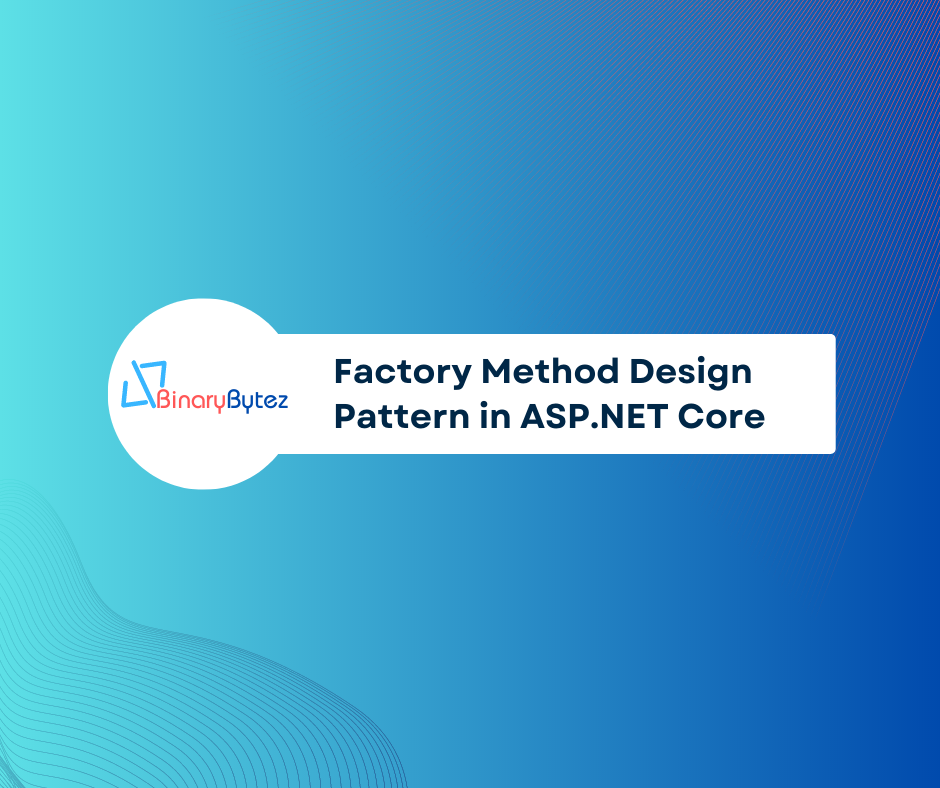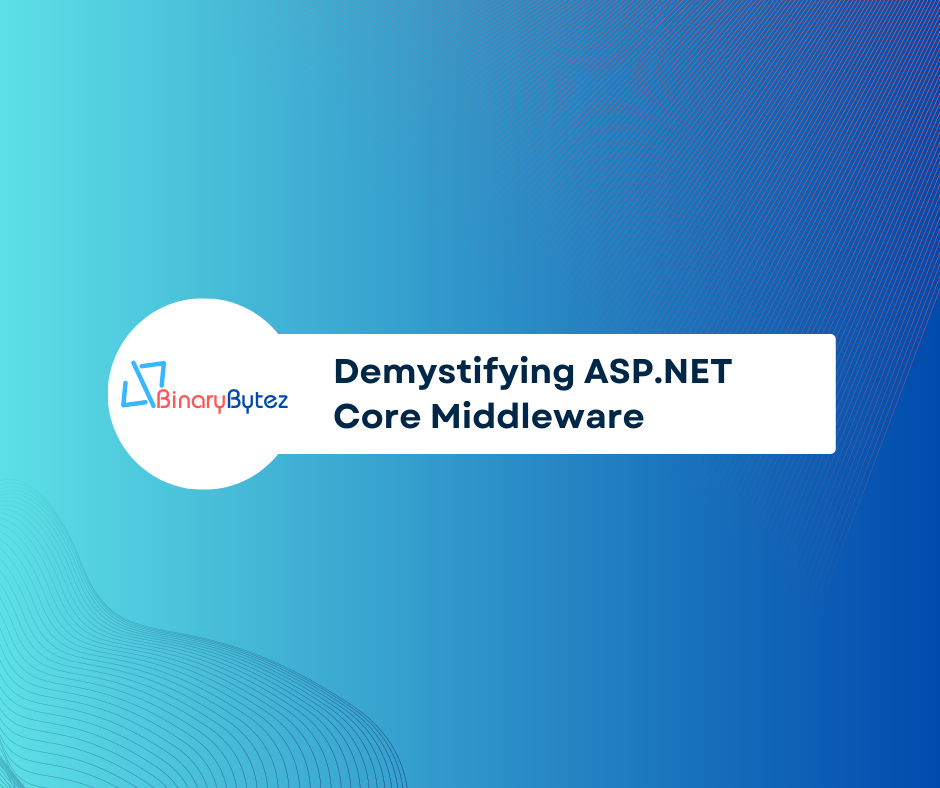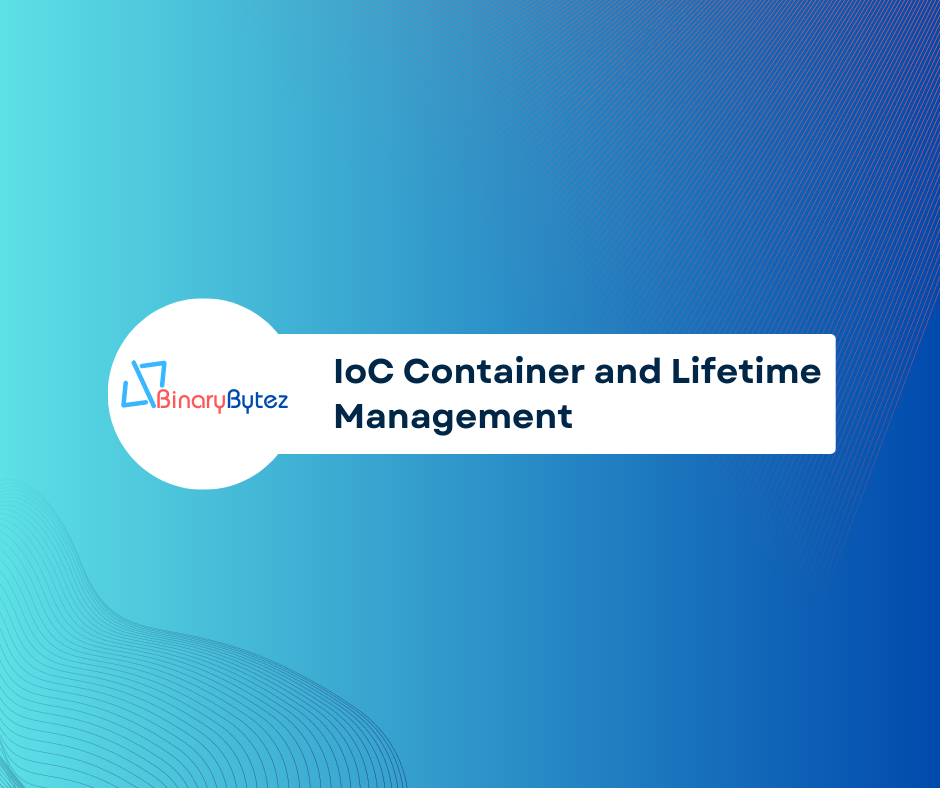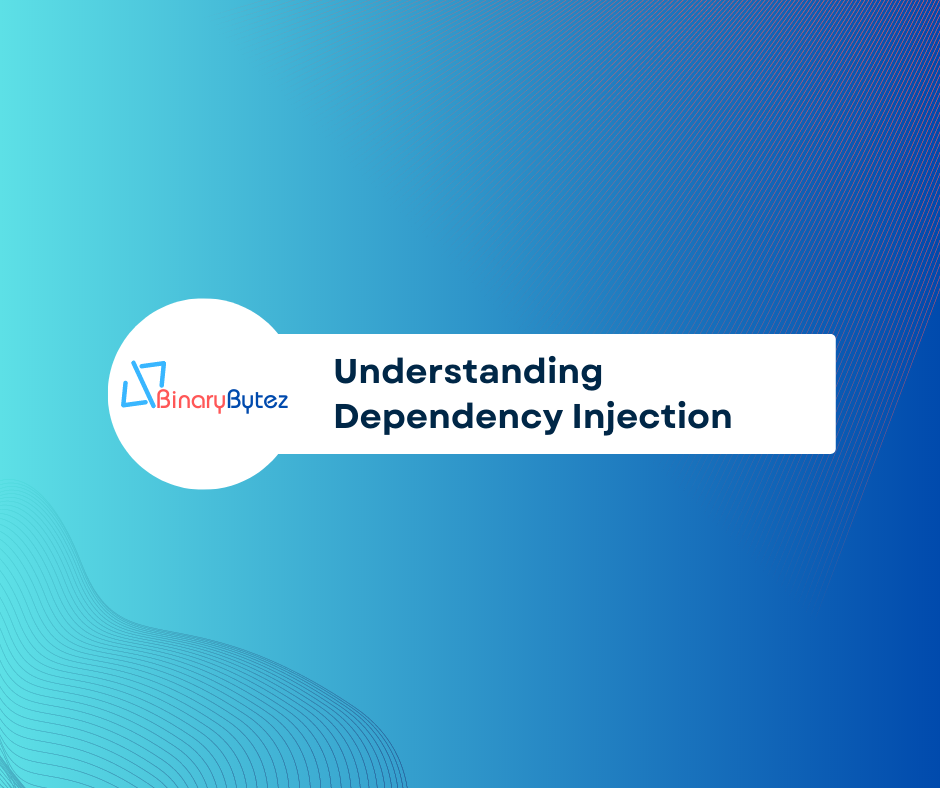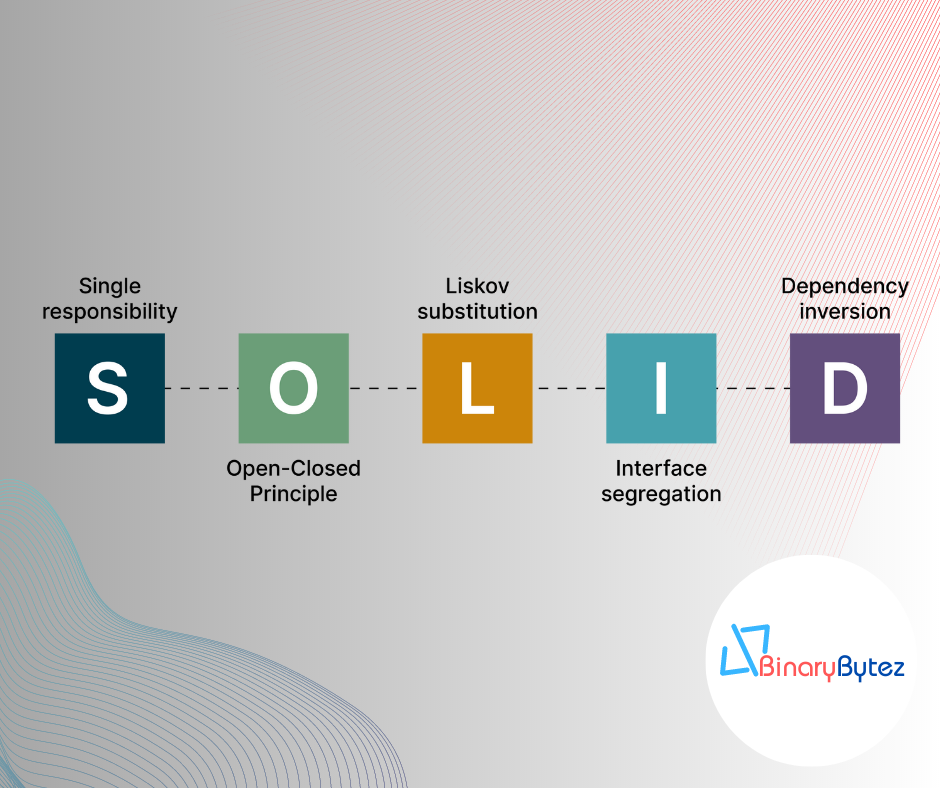Articles contributed by the community, curated for your enjoyment and reading.
Filters
Reset
Introduction:
In modern web development, handling concurrency and improving application responsiveness are critical aspects. ASP.NET Core offers powerful tools for managing asynchronous operations through Tasks and Threads. In this blog post, I will delve into the concepts of Tasks and Threads, understand their differences, and explore practical code examples to leverage their benefits in ASP.NET Core applications.
Introduction to Asynchronous Programming:
Asynchronous programming allows applications to perform tasks concurrently, enabling better resource utilization and responsiveness. Unlike synchronous programming, where each operation blocks the thread until completion, asynchronous operations free up threads to handle other tasks. This enhances scalability and improves the overall user experience in web applications.
Understanding Tasks in ASP.NET Core:
Tasks represent asynchronous operations in ASP.NET Core. They encapsulate a unit of work that can run concurrently with other tasks. Here’s an example of creating and running a Task in ASP.NET Core:
using System;
using System.Threading.Tasks;
public class MyService
{
public async Task<string> GetDataAsync()
{
await Task.Delay(2000); // Simulate a time-consuming operation
return "Data from asynchronous operation";
}
}
Exploring Threads in ASP.NET Core:
Threads are low-level constructs used for concurrent programming. While Tasks abstract away the complexities, Threads provide direct control over concurrency. Here’s a basic example of creating and executing a Thread in ASP.NET Core:
using System;
using System.Threading;
public class MyService
{
public void ProcessData()
{
Thread thread = new Thread(DoWork);
thread.Start();
}
private void DoWork()
{
// Perform some work on a separate thread
}
}
Asynchronous Web Requests with Tasks:
In ASP.NET Core, you can use Tasks to perform asynchronous web requests. This ensures that your application remains responsive even during time-consuming API calls. Here’s an example:
using System.Net.Http;
using System.Threading.Tasks;
public class MyService
{
private readonly HttpClient _httpClient;
public MyService(HttpClient httpClient)
{
_httpClient = httpClient;
}
public async Task<string> GetApiResponseAsync(string url)
{
HttpResponseMessage response = await _httpClient.GetAsync(url);
return await response.Content.ReadAsStringAsync();
}
}
Parallel Processing with Threads:
Threads are suitable for CPU-bound operations that can be executed concurrently. The Parallel class in ASP.NET Core allows you to execute parallel loops easily:
using System;
using System.Threading.Tasks;
public class MyService
{
public void ProcessDataParallel()
{
Parallel.For(0, 10, i =>
{
// Perform some CPU-bound work in parallel
});
}
}
Best Practices and Considerations:
When working with Tasks and Threads, it’s essential to consider error handling, performance optimization, and choosing the right approach for specific scenarios. Properly managing resources and handling exceptions will ensure a robust and reliable application.
Conclusion:
By understanding and effectively using Tasks and Threads in ASP.NET Core, developers can create responsive, scalable, and high-performance web applications. Whether handling asynchronous web requests or performing parallel processing, mastering these concepts is crucial for building modern web applications.
In conclusion, the power of asynchronous programming in ASP.NET Core lies in the ability to harness the full potential of Tasks and Threads to create efficient and responsive applications. By incorporating these techniques into your development workflow, you can build applications that deliver exceptional user experiences and perform optimally under various conditions.
I am Kawser Hamid. Please find original article here, Asynchronous Programming in ASP.NET Core: Demystifying Tasks and Threads.
From my cookbook, this winter-friendly twist on pesto pasta is one of my go-to weeknight dinner recipes. I can get it on the table in 25 minutes max, and it’s a great way to sneak in some healthy greens (green-phobic kids: you know who you are!).
Note that you’ll need some of the cooking water from the pasta for the sauce, so be sure to reserve some before you drain the pasta. It’s easy to forget when you’re multitasking, so I always place a liquid measuring cup right next to the colander as a visual reminder. Also, the kale and walnut pesto freezes beautifully so do yourself a favor and make a double batch.
What you’ll need for spaghetti with kale and walnut pesto
How to make spaghetti with kale and walnut pesto
Begin by toasting the walnuts in a 350°F-oven until lightly toasted and fragrant, 6 to 10 minutes. Transfer to a plate and set aside.
Bring a large pot of salted water to a boil. Add the spaghetti and boil until al dente, about 10 minutes, or according to package instructions.
Meanwhile, make the pesto: In the bowl of a food processor fitted with the steel blade, combine the kale and basil.
Process until finely chopped.
Add the remaining ingredients.
Pulse until smooth and set aside.
Reserve 1 cup of the cooking water, then drain the spaghetti in a colander. Add the spaghetti back to the pot and toss with the pesto and ½ cup of the cooking water. If the pasta seems dry, add more of the water.
Taste and adjust seasoning, if necessary, then serve topped with the grated pecorino Romano and chopped walnuts.
How to Freeze Kale and Walnut Pesto
The pesto can be frozen for up to 3 months. Store in a tightly sealed jar or airtight plastic container, covered with a thin layer of olive oil (the oil seals out the air and prevents the pesto from oxidizing, which would turn it an unappetizing brown color).
[caption id="attachment_6106" align="aligncenter" width="719"] Photo by Alexandra Grablewski (Chronicle Books, 2018)[/caption]
I am Jenn Segal. Please find original post here, Spaghetti with Kale & Walnut Pesto.
Zesty pesto, peas, pine nuts, and mozzarella pearls make a flavorful and pretty pasta salad.
Though pasta salad is a staple at every summer cookout, most of them are (forgive me) pretty bad. The usual formula – cold cooked pasta, raw vegetables, and an oil-and-vinegar salad dressing – just doesn’t work well. The key to making a delicious pasta salad is to replace the sharp vinaigrette with a rich and flavorful sauce. In this pesto pasta salad recipe, zesty pesto mellowed and thickened with a little mayonnaise makes a lovely sauce. Peas and pesto go well together, so I add peas to both the sauce and the pasta. Crunchy toasted pine nuts and creamy mozzarella pearls fill the salad out. Go ahead and make all of the components of the salad a day ahead of time; just keep everything separate and toss together right before serving.
What You’ll Need To Make Pesto pasta Salad with Peas, Pine Nuts & Mozzarella Pearls
The best pasta to use for this salad is corkscrew-shaped fusilli, which has plenty of surface area and groves for capturing the pesto sauce. Rotini is another good option.
For the pesto, I use my go-to pesto recipe, which is in my fridge practically all summer long, but store-bought will work, too.
For the cheese, use imported Parmigiano-Reggiano from Italy; domestic Parmesan pales in comparison. You can always tell if it’s authentic by looking at the rind, which is embossed with the name over and over. If the cheese is already grated, it should be labeled “Parmigiano-Reggiano,” not “Parmesan.”
Step-by-Step Instructions
Begin by boiling the pasta in salted water. Be sure it is fully cooked, as pasta firms up at room temperature (you don’t want al dente-cooked pasta for pasta salad). Set aside to cool.
Next, toast the pine nuts in a skillet over medium heat until golden. Keep a close eye on them, as they burn quickly, and then transfer them to a plate as soon as they are cooked. If you leave them in the hot pan, they will continue to cook.
Next, make the pesto sauce. In the bowl of a food processor fitted with a steel blade, combine the pesto, lemon juice, and 1/2 cup of the peas.
Purée until smooth, then add the mayonnaise.
Process again until the sauce is smooth.
Toss the cooled pasta with the olive oil.
Add the pesto-pea mixture to the pasta, along with the Parmesan, 3/4 cup of the peas, 3 tablespoons of the pine nuts, the mozzarella, 1/2 teaspoon salt, and 1/2 teaspoon pepper.
Mix well, then taste and adjust seasoning, if necessary. (I usually add 1/4 teaspoon each more salt and pepper, but it will depend on the saltiness of the pesto you’re using and how heavily the pasta water was salted.) Transfer to a serving bowl and sprinkle the remaining peas, pine nuts, and basil over top. Serve at room temperature.
This dish would pair nicely with my grilled chicken breasts or grilled flank steak with garlic and rosemary.
I am Jenn Segal. Please find the original article here, Pesto Pasta Salad with Peas, Pine Nuts & Mozzarella Pearls.
Introduction:
In the world of ASP.NET Core development, design patterns play a crucial role in creating maintainable, flexible, and scalable applications. One such essential pattern is the Factory Method design pattern. In this blog post, I will explore the Factory Method pattern and its implementation in ASP.NET Core with a real-world example.
Factory Method Design Pattern:
The Factory Method pattern is a creational design pattern that provides an interface for creating objects in a super class, but allows subclasses to alter the type of objects that will be created. This pattern promotes loose coupling between client code and the objects it creates, enabling easier extension and modification of the codebase.
Core Components of the Factory Method Pattern in ASP.NET Core:
Creator: The abstract class or interface that declares the factory method for creating objects.
Concrete Creator: Subclasses that implement the factory method to create specific objects.
Product: The abstract class or interface that defines the interface of objects the factory method creates.
Concrete Product: The classes that implement the Product interface and represent the objects created by the factory method.
Example: Creating Different Payment Gateways with Factory Method
Let’s demonstrate the Factory Method pattern in ASP.NET Core with an example of creating different payment gateways.
1. Create the Product interface – IPaymentGateway.cs
public interface IPaymentGateway
{
void ProcessPayment(decimal amount);
}
2. Implement Concrete Products – PayPalGateway.cs and StripeGateway.cs
public class PayPalGateway : IPaymentGateway
{
public void ProcessPayment(decimal amount)
{
// Integration code for processing payment through PayPal API
Console.WriteLine($"Processing payment of {amount} USD using PayPal Gateway...");
}
}
public class StripeGateway : IPaymentGateway
{
public void ProcessPayment(decimal amount)
{
// Integration code for processing payment through Stripe API
Console.WriteLine($"Processing payment of {amount} USD using Stripe Gateway...");
}
}
3. Create the Creator abstract class – PaymentGatewayFactory.cs
public abstract class PaymentGatewayFactory
{
public abstract IPaymentGateway CreateGateway();
}
4. Implement Concrete Creators – PayPalGatewayFactory.cs and StripeGatewayFactory.cs
public class PayPalGatewayFactory : PaymentGatewayFactory
{
public override IPaymentGateway CreateGateway()
{
return new PayPalGateway();
}
}
public class StripeGatewayFactory : PaymentGatewayFactory
{
public override IPaymentGateway CreateGateway()
{
return new StripeGateway();
}
}
5. Client Code – Startup.cs (ConfigureServices method)
public void ConfigureServices(IServiceCollection services)
{
// Register the desired payment gateway factory based on configuration or user selection
services.AddScoped<PaymentGatewayFactory, PayPalGatewayFactory>();
//services.AddScoped<PaymentGatewayFactory, StripeGatewayFactory>();
}
6. Client Code – PaymentController.cs
public class PaymentController : ControllerBase
{
private readonly PaymentGatewayFactory _paymentGatewayFactory;
public PaymentController(PaymentGatewayFactory paymentGatewayFactory)
{
_paymentGatewayFactory = paymentGatewayFactory;
}
[HttpPost("process-payment")]
public IActionResult ProcessPayment(decimal amount)
{
IPaymentGateway gateway = _paymentGatewayFactory.CreateGateway();
gateway.ProcessPayment(amount);
return Ok("Payment processed successfully.");
}
}
Conclusion:
The Factory Method Design Pattern in ASP.NET Core provides a powerful mechanism for creating objects with loose coupling. By encapsulating the object creation process within a factory method, we can easily switch between different implementations of payment gateways without modifying the client code. This flexibility enhances the maintainability and scalability of our ASP.NET Core applications.
Through the example of creating different payment gateways, I have explored how to implement the Factory Method pattern in ASP.NET Core, allowing developers to build more organized and extensible codebases. By leveraging design patterns like Factory Method, ASP.NET Core developers can craft robust and adaptable solutions that meet the diverse requirements of modern web applications.
Please find original article here, Mastering the Factory Method Design Pattern in ASP.NET Core.
Penne alla vodka, or penne with a bright tomato sauce enriched with heavy cream, makes a quick, family-friendly dinner.
From my cookbook Weeknight/Weekend, this penne alla vodka, or penne with vodka sauce, is one of those no-food-in-the-house dinners that I make over and over again. Aside from the fresh basil – and even that grows abundantly on my patio during the summer – every ingredient for this dish is always on hand in my kitchen. The vodka sauce, a bright tomato sauce enriched with heavy cream, comes together in the time it takes to boil the pasta. You won’t really taste the vodka; it’s simply there to cut the richness of the dish without adding a distinct flavor of its own. (Some people believe the dish was created by vodka manufacturers to sell more vodka!)
What You’ll Need To Make Penne Alla Vodka
Step-by-Step Instructions
Before getting starting, crush the tomatoes. You can either use kitchen shears to cut them directly in the can or pour the entire contents of the can into a resealable freezer bag, press out any excess air, seal tightly, and then squish by hand. (Diced canned tomatoes are treated with a chemical that prevents them from breaking down when cooking, so when I want a smooth tomato sauce, I prefer to use canned whole tomatoes and chop them myself.)
Bring a large pot of salted water to a boil.
Heat the butter in a 3-quart saucepan over medium heat until shimmering.
Add the onion.
Cook, stirring frequently, until softened and translucent, 3 to 4 minutes.
Add the garlic and red pepper flakes and cook, stirring constantly, for 30 seconds more. Do not brown.
Add the tomatoes and their juices, tomato paste, salt, sugar, and vodka.
Bring to a boil, then reduce the heat to medium-low and cook at a lively simmer, uncovered, stirring occasionally, for 10 minutes.
While the sauce simmers, boil the pasta according to the package instructions until just shy of al dente.
Before draining, ladle out about 1 cup of the pasta cooking water and set it aside. Drain the pasta, then return it to the pot.
Stir the cream into the sauce.
Simmer, uncovered, for about 3 minutes more. Using an immersion blender, purée the sauce until mostly smooth, leaving some small chunks. (Alternatively, ladle some of the sauce into a blender and purée until smooth. Be sure to remove the center knob on the blender and cover with a dish towel to avoid splatters, then add back to the pan.)
Pour the sauce over the penne. It may seem a little soupy; that’s okay. Bring the sauce and pasta to a gentle boil over medium-high heat, stirring frequently; cook until the sauce is reduced and thickened enough to cling to the pasta, a few minutes. Add a little of the reserved pasta water if the pasta seems dry.
When combining a sauce with cooked pasta, always cook them together in the pot for a minute or two before serving. This marries the flavors and helps the sauce cling to the pasta.
Stir in the basil, then taste and adjust seasoning if necessary.
Spoon the pasta into serving bowls and pass the grated Parmigiano-Reggiano at the table.
Posted by Jenn Segal. Please find original article here, Penne alla Vodka.
A Guide to Handling Requests and Responses
ASP.NET Core is a powerful and flexible framework for building web applications, and one of its key features is Middleware. Middleware is a crucial component that sits between the server and the application, allowing you to handle incoming HTTP requests and outgoing responses. In this blog post, we will demystify ASP.NET Core Middleware and explore how it enables you to add custom logic, modify requests, and process responses.
What is Middleware?
In ASP.NET Core, Middleware is a pipeline-based request processing mechanism. Each Middleware component in the pipeline can examine, modify, or delegate the processing of an HTTP request. The request then flows through the pipeline, passing through each Middleware, until it reaches the application or gets a response.
Middleware components are executed in the order they are added to the pipeline, and they work together to handle various tasks such as authentication, logging, routing, and caching. The ability to chain multiple Middlewares gives developers the flexibility to compose complex request handling logic efficiently.
Middleware Components
Middleware components are simple classes or functions that conform to the Middleware signature. A Middleware component has access to the HttpContext, which contains the incoming request and the outgoing response.
Here’s the signature of a Middleware component:
public delegate Task RequestDelegate(HttpContext context);
A Middleware component is a delegate that takes an HttpContext as a parameter and returns a Task. The delegate can handle the incoming request, optionally modify it, and pass it along to the next Middleware or the application itself.
Implementing Custom Middleware
Creating custom Middleware is straightforward. You can add a custom Middleware component to the pipeline using the UseMiddleware extension method in the Startup class’s Configure method.
Let’s create a simple custom Middleware that logs information about incoming requests:
public class RequestLoggerMiddleware
{
private readonly RequestDelegate _next;
public RequestLoggerMiddleware(RequestDelegate next)
{
_next = next;
}
public async Task Invoke(HttpContext context)
{
// Log information about the incoming request
var requestPath = context.Request.Path;
var requestMethod = context.Request.Method;
Console.WriteLine($"Incoming request: {requestMethod} {requestPath}");
// Call the next Middleware in the pipeline
await _next(context);
// Middleware code to execute after the request has been handled
}
}
In the example above, our custom Middleware, RequestLoggerMiddleware, logs information about the incoming request and then calls the next Middleware in the pipeline using the _next delegate.
To add the custom Middleware to the pipeline, update the Configure method in the Startup class:
public void Configure(IApplicationBuilder app)
{
app.UseMiddleware<RequestLoggerMiddleware>();
// Other Middlewares and application configuration
}
Now, whenever a request is made to your application, the RequestLoggerMiddleware will log information about the incoming request.
Ordering Middleware Components
The order of Middleware components matters, as each Middleware can influence the behavior of subsequent components. For example, if authentication Middleware is added before routing Middleware, authentication will be performed before routing the request to the appropriate controller action.
To control the order of Middleware execution, you can use the Use and Run extension methods. The Use method adds the Middleware to the pipeline, while the Run method adds a terminal Middleware that doesn’t call the next Middleware.
app.UseMiddleware<AuthenticationMiddleware>();
app.UseMiddleware<RequestLoggerMiddleware>();
app.UseMiddleware<RoutingMiddleware>();
app.Run(async context =>
{
// Terminal Middleware for handling requests without calling the next Middleware.
await context.Response.WriteAsync("Page not found.");
});
In the example above, AuthenticationMiddleware, RequestLoggerMiddleware, and RoutingMiddleware are executed in sequence, while the Run method provides a terminal Middleware to handle requests that don’t match any route.
Conclusion
ASP.NET Core Middleware is a powerful and flexible feature that enables developers to handle HTTP requests and responses in a modular and extensible manner. By creating custom Middleware components, you can add custom logic, modify requests, and process responses to build robust and feature-rich web applications. Understanding how Middleware works and its order of execution is essential for building efficient and well-organized ASP.NET Core applications.
In this blog post, I’ve explored the concept of ASP.NET Core Middleware, implemented a custom Middleware, and learned how to control the order of Middleware execution. Armed with this knowledge, you can enhance your ASP.NET Core projects with custom Middleware to handle various tasks efficiently and provide a seamless user experience.
Please find original article here, Demystifying ASP.NET Core Middleware.
Understanding Inversion of Control (IoC) Container and Lifetime Management in ASP.NET Core
In modern software development, the Inversion of Control (IoC) pattern has become a fundamental principle for building scalable and maintainable applications. The IoC pattern promotes loose coupling between classes by allowing the control of object creation and dependency resolution to be inverted or delegated to a container. In the context of ASP.NET Core, the IoC container is a core component that manages the lifetime and resolution of dependencies, making it easier to manage application dependencies and promote modular design.
In this blog post, we will explore the concept of the IoC container and understand the different dependency lifetimes supported by ASP.NET Core, accompanied by relevant code examples.
What is an IoC Container?
At its core, an IoC container is a tool that automates the process of managing object creation and dependency resolution in an application. It is responsible for instantiating objects and resolving their dependencies, removing the burden from the application code. By using an IoC container, classes can be decoupled from their dependencies, leading to more modular and testable code.
In ASP.NET Core, the built-in IoC container is based on the Microsoft.Extensions.DependencyInjection library. It is a lightweight, extensible, and feature-rich container that simplifies the management of application dependencies.
Dependency Lifetimes in ASP.NET Core
When registering services with the IoC container, you can specify different dependency lifetimes. The dependency lifetime defines how long an object (service) should exist within the container and when a new instance should be created. ASP.NET Core supports three main dependency lifetimes:
Transient: A new instance of the service is created every time it is requested from the container. Transient lifetime is suitable for lightweight, stateless services.
Scoped: A single instance of the service is created per HTTP request or service scope. Within the same HTTP request or service scope, the same instance is reused. Scoped lifetime is suitable for services that maintain state across multiple related operations within the same request.
Singleton: A single instance of the service is created and shared across the entire application. The same instance is reused for every request. Singleton lifetime is suitable for services that are stateless or should maintain global state throughout the application’s lifetime.
Example: Registering Services with Dependency Lifetimes
Let’s look at a practical example of registering services with different dependency lifetimes in an ASP.NET Core application:
// Startup.cs
using Microsoft.Extensions.DependencyInjection;
public class Startup
{
public void ConfigureServices(IServiceCollection services)
{
// Transient lifetime - A new instance is created each time it's requested.
services.AddTransient<IMyTransientService, MyTransientService>();
// Scoped lifetime - A single instance is created per HTTP request or service scope.
services.AddScoped<IMyScopedService, MyScopedService>();
// Singleton lifetime - A single instance is created and shared across the application.
services.AddSingleton<IMySingletonService, MySingletonService>();
}
}
In this example, we have registered three services with different dependency lifetimes. Now, let’s define these services:
// Services
public interface IMyTransientService
{
string GetInstanceId();
}
public class MyTransientService : IMyTransientService
{
private readonly Guid _instanceId;
public MyTransientService()
{
_instanceId = Guid.NewGuid();
}
public string GetInstanceId()
{
return _instanceId.ToString();
}
}
public interface IMyScopedService
{
string GetInstanceId();
}
public class MyScopedService : IMyScopedService
{
private readonly Guid _instanceId;
public MyScopedService()
{
_instanceId = Guid.NewGuid();
}
public string GetInstanceId()
{
return _instanceId.ToString();
}
}
public interface IMySingletonService
{
string GetInstanceId();
}
public class MySingletonService : IMySingletonService
{
private readonly Guid _instanceId;
public MySingletonService()
{
_instanceId = Guid.NewGuid();
}
public string GetInstanceId()
{
return _instanceId.ToString();
}
}
In this example, we have defined three services: MyTransientService, MyScopedService, and MySingletonService, each implementing their respective interfaces. Each service has a unique identifier generated during its instantiation.
Using Services with Different Dependency Lifetimes
Now, let’s use these services in a controller to observe how their dependency lifetimes behave:
// MyController.cs
using Microsoft.AspNetCore.Mvc;
[Route("api/[controller]")]
[ApiController]
public class MyController : ControllerBase
{
private readonly IMyTransientService _transientService;
private readonly IMyScopedService _scopedService;
private readonly IMySingletonService _singletonService;
public MyController(
IMyTransientService transientService,
IMyScopedService scopedService,
IMySingletonService singletonService)
{
_transientService = transientService;
_scopedService = scopedService;
_singletonService
= singletonService;
}
[HttpGet]
public IActionResult Get()
{
var result = new
{
TransientInstanceId = _transientService.GetInstanceId(),
ScopedInstanceId = _scopedService.GetInstanceId(),
SingletonInstanceId = _singletonService.GetInstanceId()
};
return Ok(result);
}
}
In this controller, we inject the three services as constructor parameters. We then call the GetInstanceId() method on each service and return the unique instance IDs in the HTTP response.
Conclusion
Understanding the concept of an IoC container and the different dependency lifetimes in ASP.NET Core is crucial for building modular and maintainable applications. By leveraging the IoC container, you can achieve loose coupling, improve testability, and promote good software design practices. Utilizing the appropriate dependency lifetime for each service ensures that your application performs efficiently and meets the requirements of different scenarios.
In this blog post, we explored the IoC container and the three main dependency lifetimes supported by ASP.NET Core. By applying these concepts and principles in your projects, you can create robust, scalable, and maintainable software solutions.
Remember, the IoC container is an indispensable tool in the arsenal of every software developer, enabling them to write cleaner, more modular code that is easier to maintain and extend. Embrace the IoC pattern, harness the power of the ASP.NET Core IoC container, and elevate your software development journey to new heights!
Please find original article here, IoC Container and Lifetime Management
Dependency Injection (DI) is a powerful software design pattern widely used in modern application development, including ASP.NET Core. It helps manage the complexity of large-scale applications by promoting loose coupling and increasing testability and maintainability. In this blog post, we will explore the concept of Dependency Injection, understand its benefits, and demonstrate how to implement DI in an ASP.NET Core application with relevant code examples.
What is Dependency Injection?
Dependency Injection is a design pattern that allows components to depend on abstractions (interfaces) rather than concrete implementations. It enables the separation of concerns, making the code more modular and flexible. In the context of ASP.NET Core, DI enables the injection of required services (dependencies) into classes rather than creating them directly within the class.
Benefits of Dependency Injection:
Decoupling: DI promotes loose coupling between classes, making it easier to change or replace dependencies without affecting other parts of the application.
Testability: With DI, it becomes straightforward to replace real dependencies with mock implementations during unit testing, enabling isolated and more reliable tests.
Reusability: By using interfaces and abstractions, components become more reusable across different parts of the application.
Maintainability: DI enhances code maintainability by breaking down complex components into smaller, focused classes with clear responsibilities.
Flexibility: It allows runtime configuration of dependencies, facilitating easy switch between different implementations, such as in different environments (development, production).
Dependency Injection (DI) can be categorized into three main types:
Constructor Injection:
Constructor Injection is the most common and recommended type of DI. In this type, dependencies are injected into a class through its constructor. The class declares its dependencies as constructor parameters, and the DI container provides the appropriate implementations when creating instances of the class. This promotes a clear and explicit declaration of dependencies, making the class easier to understand and test.
Example of Constructor Injection:
public class ProductService : IProductService
{
private readonly IProductRepository _productRepository;
// Constructor Injection - The IProductRepository dependency is injected into ProductService.
public ProductService(IProductRepository productRepository)
{
_productRepository = productRepository;
}
// Other methods...
}
Property Injection:
In Property Injection, dependencies are set using public properties of the class. The DI container sets the property values after creating the instance of the class. Property Injection is less preferred compared to Constructor Injection because it hides the class’s dependencies and makes it less clear which dependencies are required.
Example of Property Injection:
public class ProductService : IProductService
{
// Property Injection - The IProductRepository dependency is set using a public property.
public IProductRepository ProductRepository { get; set; }
// Other methods...
}
Method Injection:
Method Injection involves passing dependencies to a method as parameters. This type of DI is used when a class needs a dependency only for a specific method and not throughout its lifetime. Method Injection is less common and typically used in scenarios where a specific method requires additional dependencies not used by other methods in the class.
Example of Method Injection:
public class ProductService : IProductService
{
// Method Injection - The IProductRepository dependency is passed as a parameter.
public void ProcessProduct(IProductRepository productRepository)
{
// Method logic using the provided productRepository...
}
// Other methods...
}
It’s essential to choose the appropriate DI type based on the specific needs of your application. Constructor Injection is generally recommended due to its explicit declaration of dependencies and ease of testing. Property Injection and Method Injection is useful in certain scenarios but should be used with caution to maintain code readability and avoid potential pitfalls.
Implementing Dependency Injection in ASP.NET Core:
Let’s walk through an example of implementing DI in an ASP.NET Core application with the following project structure:
├── src
│ ├── Core # Contains the core business logic and domain models
│ ├── Infrastructure # Contains infrastructure concerns such as data access, external services
│ └── UI # Contains the user interface layer, including controllers, views, etc.
1. Define Interfaces:
In the Core project, create interfaces for services that will be injected into other classes. For example, IProductService and IProductRepository.
// IProductService.cs
public interface IProductService
{
Task<IEnumerable<ProductViewModel>> GetProducts();
// Other methods...
}
// IProductRepository.cs
public interface IProductRepository
{
Task<IEnumerable<Product>> GetAll();
// Other methods...
}
2. Implement Services and Repositories:
In the Infrastructure project, implement the services and repositories defined in the Core project.
// ProductService.cs
public class ProductService : IProductService
{
private readonly IProductRepository _productRepository;
public ProductService(IProductRepository productRepository)
{
_productRepository = productRepository;
}
public async Task<IEnumerable<ProductViewModel>> GetProducts()
{
var products = await _productRepository.GetAll();
// Map and return view models...
}
// Other methods...
}
// ProductRepository.cs
public class ProductRepository : IProductRepository
{
private readonly ApplicationDbContext _dbContext;
public ProductRepository(ApplicationDbContext dbContext)
{
_dbContext = dbContext;
}
public async Task<IEnumerable<Product>> GetAll()
{
return await _dbContext.Products.ToListAsync();
}
// Other methods...
}
3. Register Services in Startup:
In the Startup.cs file of the UI the project, configure DI by registering services.
public void ConfigureServices(IServiceCollection services)
{
services.AddDbContext<ApplicationDbContext>(options =>
options.UseSqlServer(Configuration.GetConnectionString("DefaultConnection")));
services.AddScoped<IProductService, ProductService>();
services.AddScoped<IProductRepository, ProductRepository>();
// Other service registrations...
services.AddControllersWithViews();
}
4. Utilize Dependency Injection:
Finally, utilize DI in the controllers or other classes that require the services.
public class ProductController : Controller
{
private readonly IProductService _productService;
public ProductController(IProductService productService)
{
_productService = productService;
}
public async Task<IActionResult> Index()
{
var products = await _productService.GetProducts();
return View(products);
}
// Other actions...
}
Conclusion:
Dependency Injection is a crucial aspect of building scalable and maintainable applications. In ASP.NET Core, it allows for the decoupling of components, increases testability, and enhances code maintainability. By utilizing interfaces and registering services in the Startup class, we can easily implement DI in our projects. This approach helps to achieve a clean, organized, and robust architecture that is highly beneficial for long-term project success.
Implementing DI in your projects can lead to more maintainable, testable, and flexible applications, allowing you to focus on delivering value to your users while maintaining a high level of code quality.
Note: This article has been written by Kawser Hamid and republished on MudMatter with Author’s Permission. Please find the original link here – Understanding Dependency Injection: A Practical Guide with Code Examples.
Loaded with basil pesto, fresh tomatoes and mozzarella, pesto pizza is the ultimate summer pizza.
To me, a good pesto pizza should have bold pesto flavor. I don’t want it to taste faintly of basil, garlic, Parmesan and olive oil—I want those flavors to bowl me over. The key is to spread a generous layer of pesto over the pizzas before baking, and then top them with more pesto when they come out of the oven. Not only do these pizzas taste very “pesto-y,” they also look gorgeous and feel a little more special than your typical pizza pie.
I’ve given instructions for homemade pizza dough below but don’t feel obligated to make it; store-bought pizza dough works beautifully and makes this recipe totally doable on a weeknight. Same goes for the pesto — if you want to make it from scratch, use this recipe, but store-bought works well, too (I like Mama’s pesto from Whole Foods).
What you’ll need To Make Pesto Pizza With Fresh Tomatoes & Mozzarella
For The Pizza Dough
For the Toppings
How to make Pesto Pizza with Fresh Tomatoes & Mozzarella
Step 1: Make the Dough
In a mixer fitted with the dough hook (or a large bowl if you’d like to make it by hand), combine the flour, yeast, salt, olive oil, and water.
Mix until the dough comes together.
Increase the speed and knead for about 5 minutes, until the dough is smooth and elastic.
Flour your hands if necessary, and transfer the dough to a lightly oiled large bowl.
Cover with plastic wrap and let rise in a warm place until doubled in size, 1 to 1-1/2 hours.
When the dough has risen, punch it down.
Place the dough on a lightly floured surface.
Cut it in half and roll each part into a ball.
Cover the dough balls with a damp kitchen towel and let rest for 15 to 20 minutes — the dough will rise a bit.
Lightly dust a work surface with flour, and then pat and stretch the rested dough into two 12×8-inch rectangles. If the dough is sticky, dust it lightly with flour.
Place the two pizza doughs side-by-side on the prepared baking sheet. Then press the dough out again so that it almost touches the edges of the pan.
Step 2: Assemble and Bake the Pizzas
Cut the tomatoes crosswise into 1/8-inch-thick slices and place on a paper towel-lined plate or cutting board to drain the juices.
Spread 1/3 cup of the pesto evenly over the pizzas, leaving a 1-inch border.
Bake the pizzas on the bottom rack for 4 minutes. (I do this so the crust has time to crisp up; if you add the cheese from the get-go, it gets too brown before the crust is fully cooked.)
Remove the pan from the oven; and then top the pizzas with the mozzarella cheese, followed by the tomato slices, Parmigiano-Reggiano, salt and pepper.
Place the pizzas back in the oven and bake until the crust is crisp and golden, 6 to 8 minutes more.
Transfer the pizzas to a cutting board and drizzle with the with remaining pesto.
Sprinkle with fresh basil, then cut into slices and serve. Enjoy!
Note: This recipe has been written by Jenn Segal and republished on MudMatter with Author’s Permission. Please find the original link here – Pesto Pizza with Fresh Tomatoes & Mozzarella.
Introduction:
In the dynamic world of software development, writing maintainable and scalable code is crucial to the success of any project. SOLID design principles provide a set of guidelines that can help developers achieve precisely that. Developed by Robert C. Martin (Uncle Bob), these principles have become a cornerstone of modern software architecture. In this blog post, we will dive deep into each SOLID principle, understand its significance, and learn how to apply them with practical coding examples.
1. Single Responsibility Principle (SRP):
The Single Responsibility Principle states that a class should have only one reason to change. In other words, a class should have a single responsibility or task. Let’s see how we can apply this principle to a sample application.
// Bad Practice - One class with multiple responsibilities
class OrderProcessingService
{
public void ProcessOrder(Order order)
{
// ... Process the order ...
}
public void SendEmailConfirmation(Order order)
{
// ... Send email confirmation ...
}
public void GenerateInvoice(Order order)
{
// ... Generate the invoice ...
}
}
// Good Practice - Separate classes with single responsibility
class OrderProcessor
{
public void ProcessOrder(Order order)
{
// ... Process the order ...
}
}
class EmailService
{
public void SendEmailConfirmation(Order order)
{
// ... Send email confirmation ...
}
}
class InvoiceGenerator
{
public void GenerateInvoice(Order order)
{
// ... Generate the invoice ...
}
}
By following SRP, we ensure that each class has a clear purpose, making the code more modular, maintainable, and easier to understand.
2. Open-Closed Principle (OCP):
The Open-Closed Principle suggests that software entities should be open for extension but closed for modification. This means we should be able to extend the behavior of a class without modifying its existing code. Let’s explore how we can implement this principle.
// Bad Practice - Modifying existing class
class Shape
{
public virtual double Area()
{
// ... Calculate area ...
}
}
class Circle : Shape
{
public override double Area()
{
// ... Calculate circle area ...
}
}
class Square : Shape
{
public override double Area()
{
// ... Calculate square area ...
}
}
// Good Practice - Extending behavior through interfaces
interface IShape
{
double Area();
}
class Circle : IShape
{
public double Area()
{
// ... Calculate circle area ...
}
}
class Square : IShape
{
public double Area()
{
// ... Calculate square area ...
}
}
By using interfaces, we adhere to OCP and create more flexible and adaptable systems that can be easily extended without altering existing code.
3. Liskov Substitution Principle (LSP):
The Liskov Substitution Principle emphasizes that objects of derived classes should be substitutable for objects of the base class without affecting program correctness. Let’s see how we can maintain LSP.
// Bad Practice - Violating LSP
class Bird
{
public virtual void Fly()
{
// ... Fly like a bird ...
}
}
class Penguin : Bird
{
public override void Fly()
{
throw new NotSupportedException("Penguins cannot fly.");
}
}
// Good Practice - Upholding LSP
interface IFlyable
{
void Fly();
}
class Bird : IFlyable
{
public void Fly()
{
// ... Fly like a bird ...
}
}
class Penguin : IFlyable
{
public void Fly()
{
// Penguins cannot fly, but still conform to the interface.
}
}
By following LSP, we ensure that derived classes can seamlessly replace their base class counterparts, promoting code consistency and maintainability.
4. Interface Segregation Principle (ISP):
The Interface Segregation Principle advises segregating interfaces into smaller, focused ones, rather than having large, monolithic interfaces. This promotes a more granular and concise design. Let’s see how to implement ISP.
// Bad Practice - Large, monolithic interface
interface IWorker
{
void Work();
void Eat();
void Sleep();
}
class Robot : IWorker
{
// Implementing unnecessary methods for a robot.
}
class Human : IWorker
{
// Implementing unnecessary methods for a human.
}
// Good Practice - Segregated interfaces
interface IWorkable
{
void Work();
}
interface IEatable
{
void Eat();
}
interface ISleepable
{
void Sleep();
}
class Robot : IWorkable
{
public void Work()
{
// ... Robot work logic ...
}
}
class Human : IWorkable, IEatable, ISleepable
{
public void Work()
{
// ... Human work logic ...
}
public void Eat()
{
// ... Human eat logic ...
}
public void Sleep()
{
// ... Human sleep logic ...
}
}
By adhering to ISP, we create leaner and more focused interfaces, enabling better code maintainability and adaptability.
5. Dependency Inversion Principle (DIP):
The Dependency Inversion Principle suggests relying on abstractions rather than concrete implementations. High-level modules should not depend on low-level modules; both should depend on abstractions. Let’s apply DIP.
// Bad Practice - High-level module depends on low-level module
class OrderProcessor
{
private readonly EmailService _emailService;
public OrderProcessor()
{
_emailService = new EmailService();
}
public void ProcessOrder(Order order)
{
// ... Process the order ...
_emailService.SendEmailConfirmation(order);
}
}
// Good Practice - High-level module depends on abstraction
interface IEmailService
{
void SendEmailConfirmation(Order order);
}
class EmailService : IEmailService
{
public void SendEmailConfirmation(Order order)
{
// ... Send email confirmation ...
}
}
class OrderProcessor
{
private readonly IEmailService _emailService;
public OrderProcessor(IEmailService emailService)
{
_emailService = emailService;
}
public void ProcessOrder(Order order)
{
// ... Process the order ...
_emailService.SendEmailConfirmation(order);
}
}
By following DIP, we promote loose coupling and enable easier testing, extensibility, and a more modular design.
Conclusion:
Incorporating SOLID principles in your software development journey can be transformational. These principles empower developers to write cleaner, more maintainable, and extensible code, which results in robust and scalable software solutions. As you apply SRP, OCP, LSP, ISP, and DIP in your projects, you’ll witness the growth of your coding prowess and the emergence of truly clean code that stands the test of time. Embrace SOLID principles and elevate your coding skills to new heights!
Note: This article has been written by Kawser Hamid and republished on MudMatter with Author’s Permission. Please find the original link here – Mastering SOLID Design Principles: A Blueprint for Clean Code.
